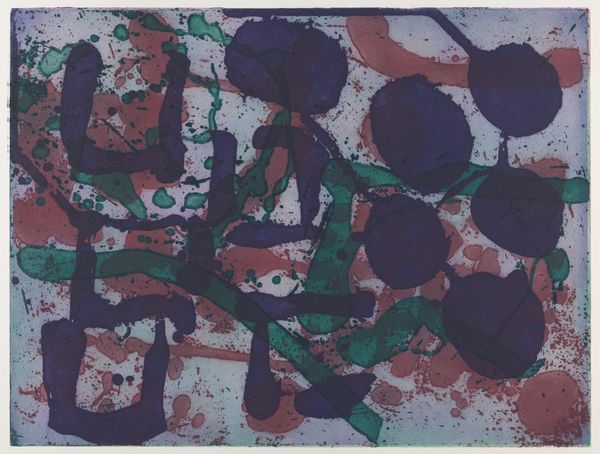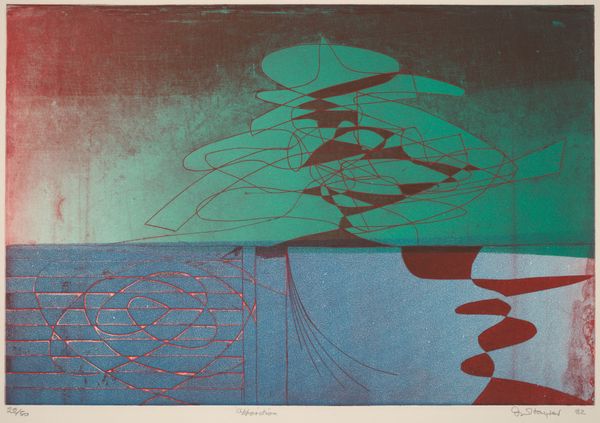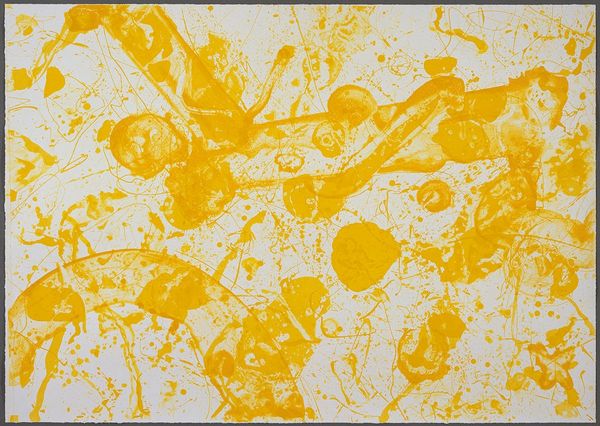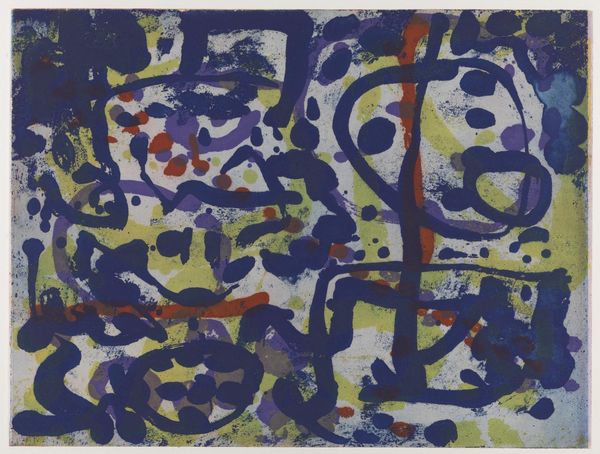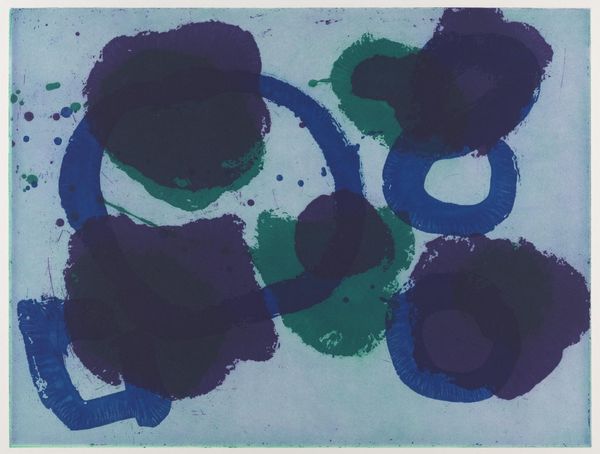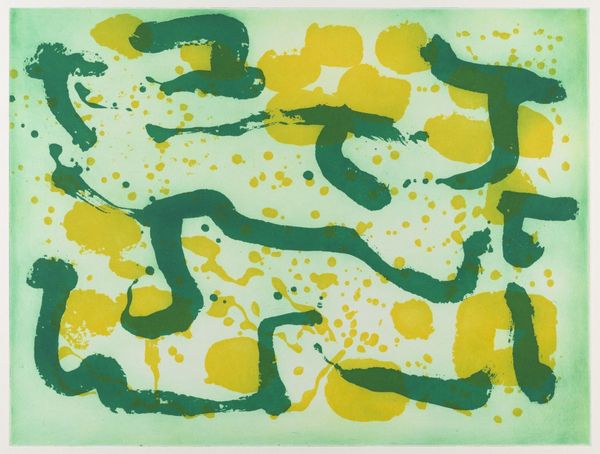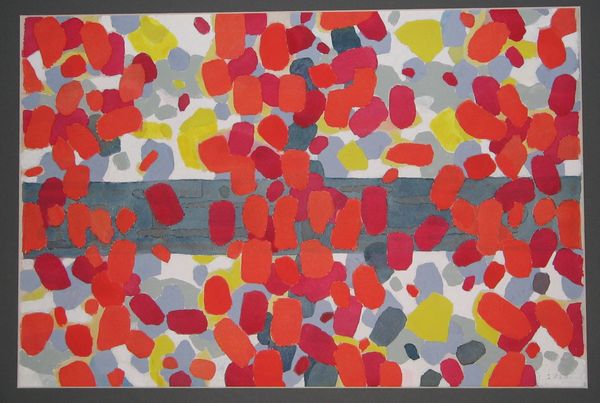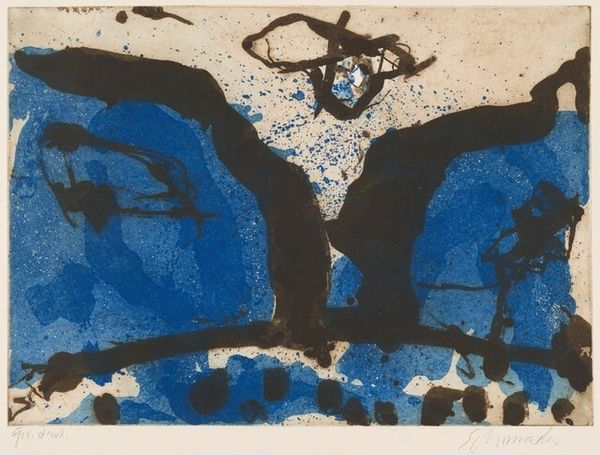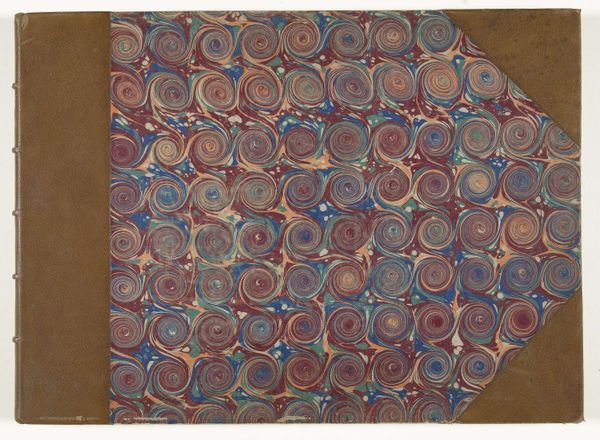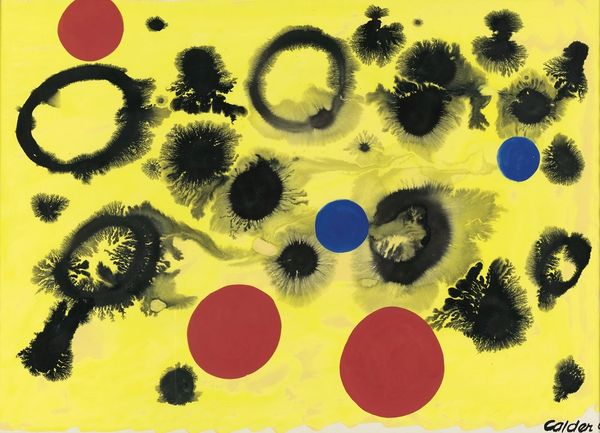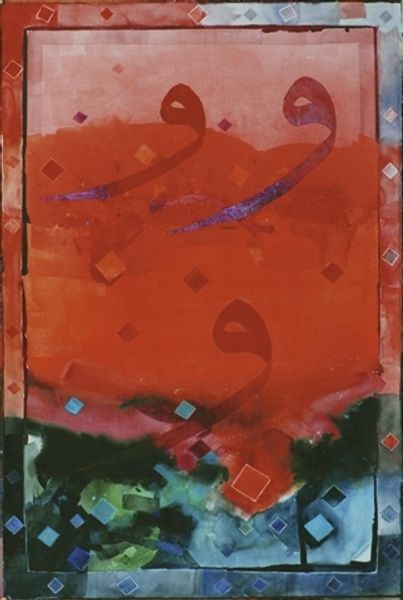![[title not known] by Patrick Heron](/_next/image?url=https%3A%2F%2Fd2w8kbdekdi1gv.cloudfront.net%2FeyJidWNrZXQiOiAiYXJ0ZXJhLWltYWdlcy1idWNrZXQiLCAia2V5IjogImFydHdvcmtzLzkwNDkwOTAxLWIzZDEtNDFiZi1hNjNkLTNiZmI2ZDUyNDhkYy85MDQ5MDkwMS1iM2QxLTQxYmYtYTYzZC0zYmZiNmQ1MjQ4ZGNfZnVsbC5qcGciLCAiZWRpdHMiOiB7InJlc2l6ZSI6IHsid2lkdGgiOiAxOTIwLCAiaGVpZ2h0IjogMTkyMCwgImZpdCI6ICJpbnNpZGUifX19&w=3840&q=75)
Dimensions: unconfirmed: 670 x 800 mm
Copyright: © Estate of Patrick Heron. All Rights Reserved, DACS 2014 | CC-BY-NC-ND 4.0 DEED, Photo: Tate
Editor: This print by Patrick Heron in the Tate collection features these amoeba-like shapes in yellow and orange against a vibrant purple backdrop. It feels both playful and a bit mysterious. What do you see in this piece, especially considering the time it was made? Curator: Well, looking at Heron's work through a historical lens, his embrace of abstraction in the post-war period was a deliberate move away from representational art tied to nationalistic agendas. The decentralization of form mirrors a societal shift, right? Editor: That's interesting. So the ambiguity is part of the point? Curator: Exactly! And consider the institutional context. The rise of abstract expressionism was heavily promoted by institutions, subtly aligning with Cold War ideologies of freedom. This work plays into that context. Editor: That gives me a lot to think about. Thanks! Curator: My pleasure. It highlights the complex interplay between art, politics and cultural narratives of the time.
Comments
Join the conversation
Join millions of artists and users on Artera today and experience the ultimate creative platform.
tate 8 months ago
⋮
The suite of prints from which this etching is taken is one of the last works Patrick Heron made before his death. Over a period of three months between December 1998 and March 1999, Heron worked in his studio with the printer Hugh Stoneman, making drawings for fifteen works in total, from which he selected the eleven plates that make up the portfolio. He finished the drawing for the colophon page on the morning of the day he died. Heron approved the proofs and decided on a sequence for presenting the works shortly before his death. The etchings were printed posthumously, overseen by the artist’s two daughters.

